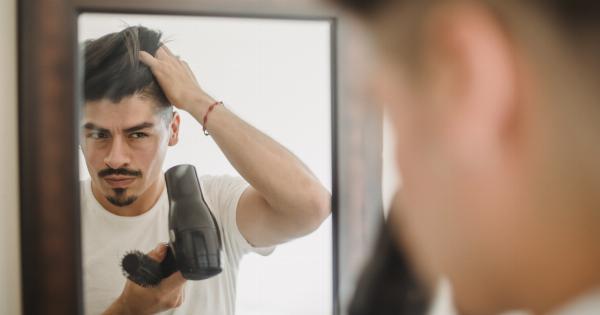Are you dealing with hair loss or a receding hairline? Is the thought of traditional hair transplantation surgery daunting to you? If so, there is good news – you can now opt for a painless hair transplantation procedure with Follicular Unit Extraction (FUE) technique. FUE is a revolutionary method of hair transplantation that offers minimal invasiveness, quicker recovery time, and a painless experience.
In this article, we will dive deeper into the world of painless hair transplantation with FUE, covering everything you need to know about this groundbreaking procedure.
What is FUE Hair Transplantation?
FUE hair transplantation is a modern surgical technique used to restore hair in areas experiencing baldness or hair thinning. Unlike traditional hair transplantation methods, FUE does not involve the removal of a strip of scalp from the donor site.
Instead, individual hair follicles are extracted directly from the donor area and transplanted to the recipient area. This technique ensures minimal scarring, faster healing, and a more comfortable experience for the patient.
The Process of FUE Hair Transplantation
The FUE hair transplantation process involves several steps:.
1. Consultation and Planning
Before undergoing a painless hair transplantation with FUE, a thorough consultation is conducted with the hair transplant surgeon.
During this consultation, the surgeon examines your scalp, evaluates the extent of hair loss, and discusses your expectations and desired results. Based on this assessment, a personalized hair transplantation plan is created.
2. Donor Area Preparation
In the FUE technique, the donor area is usually the back or sides of the scalp, where hair is genetically resistant to balding. The donor area is prepared by trimming the hair to a length suitable for the extraction process.
3. Extraction of Hair Follicles
The surgeon uses a specialized instrument, typically a micro-punch or small circular blade, to extract individual hair follicles from the donor area.
These follicles are carefully collected and preserved in a suitable solution to maintain their viability.
4. Creation of Recipient Sites
Once the hair follicles are extracted, the surgeon prepares the recipient area by making small incisions or tiny punctures. The angle, direction, and density of these recipient sites play a crucial role in achieving natural-looking hair growth.
5. Implantation of Hair Follicles
The extracted hair follicles are then meticulously implanted into the recipient sites created by the surgeon.
The surgeon ensures that the transplanted follicles match the natural hair growth pattern of the patient, resulting in a seamless and natural-looking hairline.
6. Post-Transplantation Care
After the FUE hair transplantation is complete, the surgeon provides instructions on post-transplantation care. These instructions usually include guidelines on medication, avoiding strenuous activities, and proper hair washing techniques.
Advantages of Painless Hair Transplantation with FUE
There are several advantages to choosing FUE for your hair transplantation:.
1. Minimal Invasiveness
Compared to traditional hair transplantation methods, FUE is a minimally invasive procedure. It does not involve the removal of a scalp strip, resulting in significantly less scarring and discomfort for the patient.
2. Speedy Recovery
Since FUE does not involve major incisions or sutures, the recovery time is shorter compared to traditional hair transplantation. Patients can usually resume their normal activities within a few days after the procedure.
3. Natural-Looking Results
The individual extraction and transplantation of hair follicles allow for a more precise and natural hairline design. FUE mimics the natural growth pattern, resulting in seamless integration with the existing hair and an aesthetically pleasing outcome.
4. Painless Experience
One of the key advantages of FUE is the minimal pain experienced during the procedure. Local anesthesia is administered to the donor and recipient areas, ensuring a painless experience for the patient.
5. Hair Graft Versatility
FUE enables the extraction of different types of hair grafts, including single hair follicles, double hair follicles, and even triple hair follicles. This versatility allows for a more customized approach, catering to the unique needs of each patient.
Who is an Ideal Candidate for FUE Hair Transplantation?
FUE hair transplantation is a suitable option for various candidates. You may be an ideal candidate for this procedure if:.
You have early-stage hair loss:
FUE is effective in restoring hair in the early stages of hair loss. It can help prevent further hair loss and provide a fuller head of hair.
You desire natural-looking results:
FUE offers precise control over the placement of hair follicles, allowing for a natural-looking hairline and seamless integration with existing hair.
Your donor area has sufficient hair density:
FUE relies on the availability of an adequate donor area. During the consultation, the surgeon assesses the donor area to ensure it can provide enough hair follicles for transplantation.
You prefer a minimally invasive procedure:
If you wish to avoid the discomfort and scarring associated with traditional hair transplantation, FUE is an excellent choice. It offers a minimally invasive alternative.
Conclusion
Painless hair transplantation with FUE is a groundbreaking procedure that provides individuals suffering from hair loss with an effective and comfortable solution.
With minimal invasiveness, a quicker recovery time, and natural-looking results, FUE is revolutionizing the field of hair transplantation. Consult with a qualified hair transplant surgeon to determine if FUE is the right option for you and take the first step towards regaining your full head of hair.

























